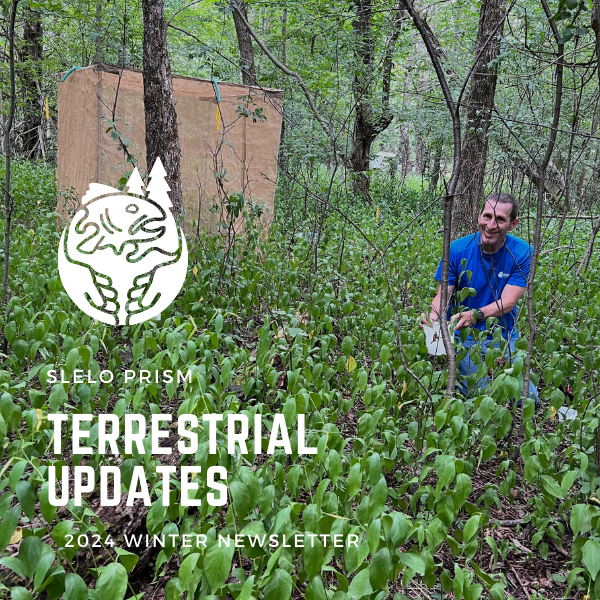This article was featured in the 2024 winter newsletter by Robert Smith-SLELO PRISM.
2023 Early Detection Field Surveys:
Results of last summer’s field season showed the presence of eight of the 9 invasive species that we have seen during previous surveys. Giant Hogweed was the only tier invasive species not present at these seven Priority Conservation Areas (PCA). Of the 100 Highly Probable Areas (HPA) that we visited, the most common species found was honeysuckle, which was found at 33 sites. Common buckthorn and pale swallowwort were the second and third most common, found at 28 and 21 HPAs respectively. Lesser numbers were found of other species such as purple Loosestrife at 14 HPAs, invasive knotweed and phragmites, both at 11 HPAs, invasive bittersweet at 8 HPAs, glossy buckthorn at 4 HPAs, and yellow iris at 2 HPAs. The fewest number of tier invasive species was found at Ontario Bay Initiative (OBI)/Three Mile Creek Preserve with 1, which was pale swallowwort, while the largest number of tier invasive species found was at Upper and Lower Lakes WMA with 7 species. The field report that includes this information should be available soon on the SLELO PRISM Website.

Hemlock Woolly Adelgid (HWA) Surveys:
HWA surveys started in January. There are a total of 18 sites that will be surveyed, 5 of which are led by Megan Pistolese-Shaw with volunteers and serve as a community learning opportunity.
Most of these sites are just outside the areas of known HWA infestation. Partners will be notified if HWA is detected during the surveys. Below is the list of HWA survey sites.
- Altmar SF
- Camp Zerbe
- Deer Creek WMA
- Derby Hill Bird Observatory
- Jadwin SF
- Happy Valley WMA
- Jackson Hill SF
- Lake Julia Preserve
- Little John WMA
- Rainbow Shores Preserve
- Sandy Creek SF
- Three Mile Bay WMA
- Winona SF
Volunteer-led Surveys:
- Whetstone Gulf SP
- Salmon River Falls
- Trenton Greenbelt trails
- Forest Park-Camden
- Great Bear Recreation Area

Recon Surveys for Connected Lands and Water (CLAW) Initiative:
In preparation for CLAW in our new contract for 2024-2028, we surveyed 5 state forests (SF) along the Algonquin to Adirondacks (A2A) corridor last year. These were Beaver Creek SF, Cold Spring Brook SF, Greenwood Creek SF, Trout Lake SF, and Wolf Lake SF. A total of four different tier invasive species were found at the state forests, including, swallowwort, phragmites, common buckthorn, and honeysuckle. Out of all the sites, Wolf Lake SF had the most tier species, while we didn’t find any tier invasive species at Cold Spring Brook SF. These surveys were limited in area covered but do give us an idea of the need for further surveys and management of invasive species in this corridor.


Please fill out the form below to be added to our listserv and receive our seasonal newsletter, event invitations and other announcements.


